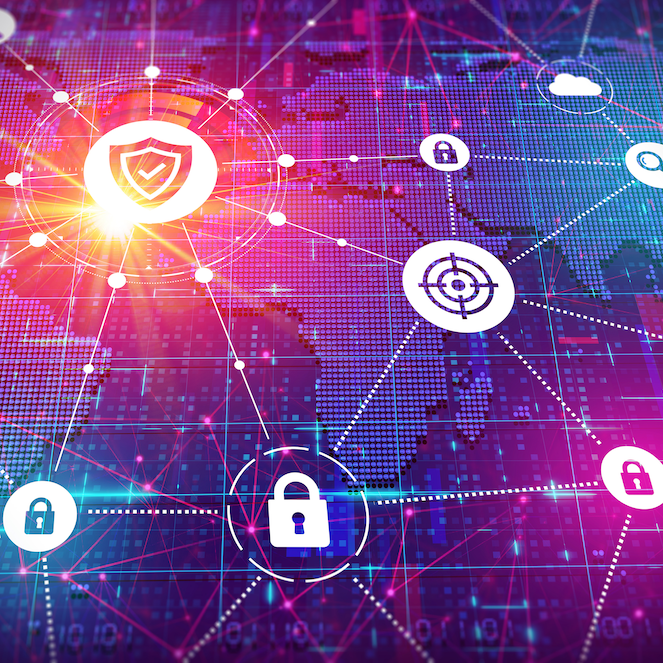Lessons learned from a stormy year
2020 taught organizations a valuable lesson: always be ready to embrace change. Worldwide connectivity and supply chains mean the shifting global environment can bring many disruptions to how businesses operate, forcing organizations to transform their ways of working almost overnight. To cope with the changing business models such as remote working, organizations moved to the cloud much faster than anticipated. The paradigms are countless.
Organizations are facing many cybersecurity challenges:
- Secure the remote workforce without introducing unnecessary friction and hampering productivity
- Protect distributed, beyond the traditional perimeter corporate assets.
To respond to these never seen before challenges, organizations had to make cybersecurity a top priority and establish zero trust security policies. Cybersecurity cannot be an afterthought, especially if we consider how malicious actors are taking advantage of the situation.
Malicious actors are opportunistic and always seek to exploit emergencies like the coronavirus crisis or natural disasters. We witnessed how they have pivoted their phishing campaigns to play on people’s fears and emotions and to lure a remote workforce into revealing their credentials. The adversaries’ developed a great variety of ransomware attacks which were deliberately targeting healthcare organizations on the frontline or schools delivering remote classes.
Be resilient and prepare for storms ahead
Businesses need to be prepared for the unknown. Be resilient. Fostering business resilience in a cybersecurity context is about thinking of all possible scenarios – even if they do not seem plausible – and seeking solutions that can really work.
Operating in cloud environments, the first step organizations need to take is to have visibility into which assets are critical and why. Once you have a thorough understanding of your assets and their impact of being breached or disrupted, then you need to understand the technologies, the processes, and the users at stake. How are they all connected? What are their interactions? What are the consequences if they are compromised?
Cloud security culture: The future is so bright (I gotta wear shades)
However, resilience does not happen overnight. It has to be supported by a well-woven culture of security. And the culture has to evolve with the shifting global environment. Organizations that resist cultural changes are left behind, on the other hand, organizations that create the culture for the future are destined to excel in their competitive market. The question is simple: How can you succeed in a fast-changing world?
Cultural change comes with focusing on your employees and empowering them to be the change. Training is a great conduit for cultural change. Cloud security culture should be an integral part of the overall corporate culture. By investing in cloud security training businesses can secure their future and will benefit in many ways, including:
- Build a strong line of defense
A comprehensive cloud security awareness program sets clear expectations for all employees and educates users about how to recognize attack vectors, help prevent cyber-related incidents and respond to a potential threat. Training employees about safe online computing, strong authentication, social engineering and more, will transform your staff into your first line of cyber defense and ensure the confidentiality of sensitive business data. - Ensure business resiliency
By building strong, knowledgeable, and resilient teams that do not depend on a small number of irreplaceable employees, you can help ensure business continuity and financial stability. Educating individuals with a range of skills on cloud security will also have a positive impact on business decision-making and innovation. - Foster confidence, minimize stress
Studies and reports indicate that security teams are overwhelmed by the sheer amount of security incidents they need to mitigate daily, and they even feel stressed by data breach news. Keeping employees abreast of the latest threat intelligence and attack methods in the cloud will help mitigate the anxiety caused by cybersecurity uncertainty. In addition to reducing stress, security training helps eliminate risky behavior actions and instills security best practices company wide. By accentuating cloud security as a priority for your company, employees are provided with the advanced tools and resources needed for adequate training. Furthermore, it enables shared responsibility among staff for safe technology usage.
“This certification thoroughly checks your understanding across the breadth of Cloud Security and skills individuals to take on challenges of securing the cloud services for Enterprises.”
– Jonathan Bentley, Chief Enterprise Security Architect, Architecture Practice
Putting people first helps with another key factor in defining a successful cybersecurity strategy: seeing the bigger picture. The rapid pace of technological change and the fact that digital tools are increasingly interwoven into every aspect of a business makes this approach essential. Cybersecurity can no longer be siloed and isolated behind the doors of an IT department.
Cloud security awareness for clear skies
Instead of rushing to hire seasoned cloud security specialists, increasing head count and costs, the best way to build a cloud security culture is by raising your employees’ awareness to be part of your security. They must be able to recognize and assess threats in the cloud before asking them to understand the depth of the threats. A solid cloud security curriculum with a touch of creativity is what you need to get the best out of your cloud awareness training.
Besides cloud security hygiene awareness, businesses need to invest on keeping their developers and security teams up to date. They both need to keep up with the latest technology and cybersecurity trends, align emerging technologies with business objectives and meet regulatory compliance while enrolling new security solutions or new applications. They need to know how to build, deliver and maintain secure products, services and solutions for the cloud, in the cloud, turning security into an enabler of success and innovation.
“It enhances practitioners’ knowledge of cloud security practices and principals and prepares them to go in and securely build a cloud security solution.”
– Otto Lee, Security Assurance Lead, AWS
Cloud security awareness should be an ongoing activity, and should always incorporate lessons learned during a crisis, such as a security incident. Bad things are going to happen to your organization, and many times they will be tied directly to a security problem. Transform these moments into an added value to grow your security culture. Do not try to hide them or use them to blame people. Instead, use them as an example for how the team can get better.
How CCSP can secure your flight to the cloud without turbulence
The ISC2 Certified Cloud Security Professional (CCSP) is your essential partner for your organization to excel in cloud security. The CCSP shows that your employees have the technical skills and knowledge to manage and secure data, applications and infrastructure in the cloud using best practices, policies and procedures established by the cybersecurity experts at ISC2.
The CCSP is the start of your organization’s journey to cloud computing. Your organization can benefit from both available learning options – individual or in-house team training. ISC2 offers a tailored training solution centered around your organization's cybersecurity certification needs and requirements. Whether you have a global workforce that requires varied training options or a smaller staff that needs a private training seminar at one central location, ISC2 delivers a solution that fits your budget, schedule, and certification objectives.


